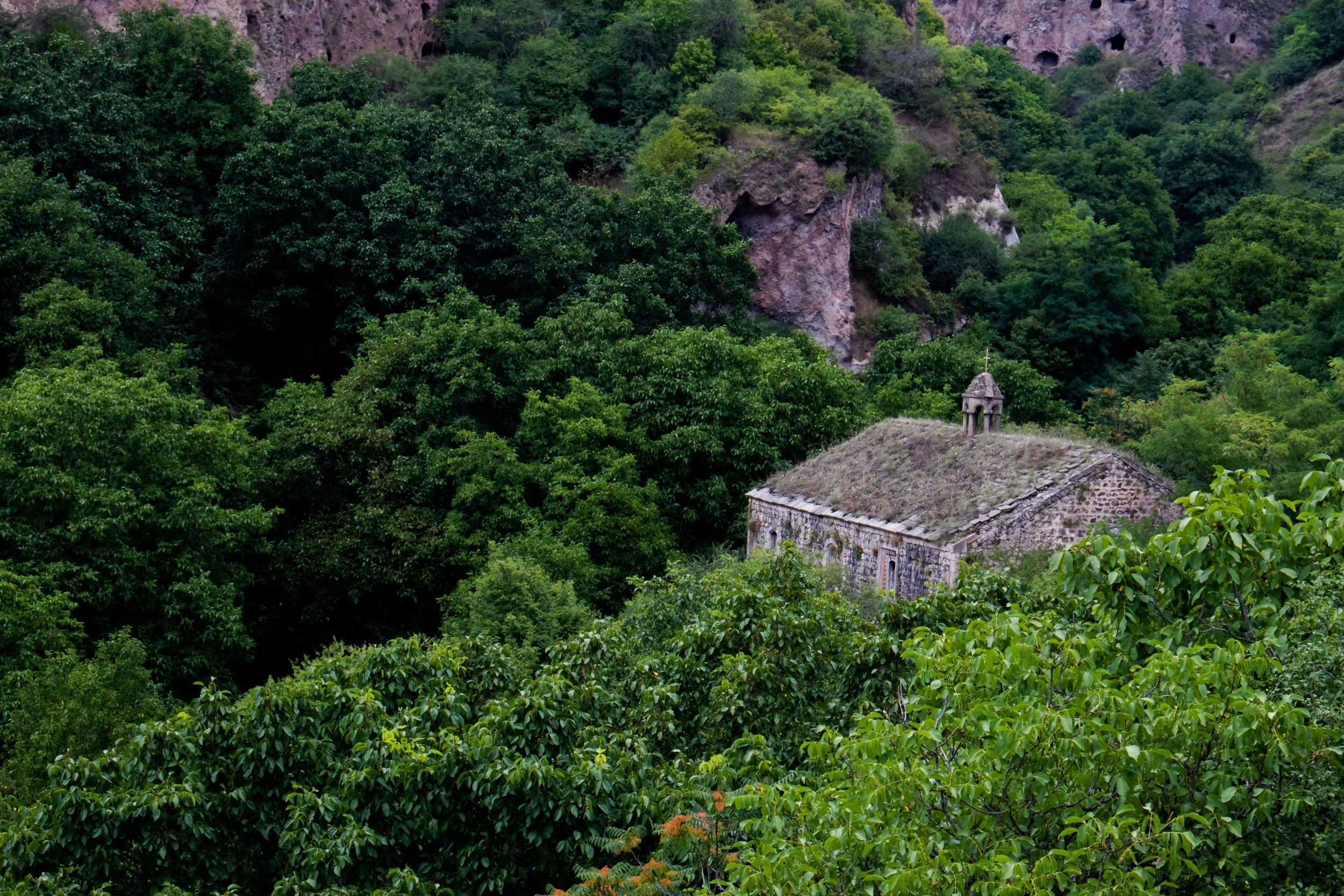Behind such a difficult-to-pronounce name—Khndzoresk—lies an unusual place. No one has lived in this village since the end of the 20th century, nevertheless, it has never been empty. Tourists from all over the world visit this village because Khndzoresk is a settlement in caves.
Contents
History of Khndzoresk city
Nobody knows where exactly the name of the village came from. There is an opinion that it was originally named ‘Khor Dzor’ or ‘Khordzoresk’ which in Armenian means 'a deep chasm'. This name suits the village because it is located exactly at such a gorge. Over time, the word began to be pronounced a little differently, ‘Khndzoresk’, which means 'apple'. Probably, because of the abundance of apple trees in the city.
Stepanos Orbelyan, a historian and clergyman wrote about Khndzoresk in the 13th century. Although, as we know, settlements exist long before they are first mentioned in written sources. A necropolis of the 2–1 century B.C. was found here. It is believed that several thousand years ago hunters took refuge in the caves. Then, at a height of 20–30 m they began to make new cavities. These cavities served as an entrance to the house, a window and a chimney
In the Middle Ages there were several rooms in the houses, one of which contained two tandoors (tonirs): one for cooking dinner and the second for baking bread. In the lower houses, there was room for livestock.
This village in the mountains, near the gorge, stretching for three kilometers also served as a fortress. At the beginning of the 18th century commander Mkhitar Sarapet was based here together with his troops. He was comrade in arms of David Bek, the great liberator of Armenians from the Turkish and Persian conquerors. And, according to historians, Khndzoresk has never been conquered.
Catholicos Abraham Kretatsi described what the village looked like in the 18th century. We know from his narrative that the peasants originally lived in the valley, but the Ottomans and Kurds forced them to move to caves high in the mountains. They climbed there with the help of leather belts, and then these belts were taken away, so outsiders could not get into the village. The Catholicos also mentioned that excellent carpets and rugs were woven in Khndzoresk.
It is also known that the caves were located one above the other, so that the roof of one cave served as a garden or courtyard for neighbors from above. The settlement resembled a multi-storey building and consisted of nine blocks.
It was one of the most densely populated villages in the Syunik region. By 1913 there were 1800 houses, several schools, shops, an oil mill. More than eight thousand people remained in the caves until the 1950s, when they finally moved to the valley. The new village took its former name, and the village above the gorge was named Old Khndzoresk.
Local residents were and are engaged in agriculture, as there are fertile lands here. The best time to visit this village is at the end of August: a lot of walnut trees grow in Old Khndzoresk, and walnut ripens at the end of summer
The climate is moderate. The neighboring city of Goris is considered one of the rainiest in Armenia. Precipitations reache Khndzoresk as well. It is great to come here from hot Yerevan in summer. In January, the average temperature is -7°C.
How to get to the village?
way out Yerevan Khndzoresk is not close - about 250 km, but it leads through picturesque fields and tuff mountains. A longer route – 310 km – will cover the coast Lake Sevan, which is also called the “Armenian Sea” due to its size.
Excursions are organized to Khndzoresk with transfer from Yerevan, often stopping at Tatev. There is a monastery of the same name and the world’s longest passenger cable car “Wings of Tatev”. You can travel this route on your own, by car from Move2Car.
By bus from the capital you can get to the largest city closest to Khndzoresk Goris. The bus departs from the Southern Bus Station (Sevana St., 93/1). A country road of 8 km leads from Goris to Khndzoresk.
A 160 meters long suspension bridge was stretched from New Khndzoresk to Old Khndzoresk at a height of about 63 meters in 2012. A long staircase of about 400 steps leads to it.
Places of interest
Nature
This whole village, or, as they write on the maps, the "cave city of Khndzoresk" can be called one big attraction. The settlement is located in the mountains covered with greenery. Walking over the bridge, tourists stop to look at the gorge and the river flowing below. A hotel operates in several caves near the bridge.

Springs
Тhe real assets of Khndzoresk are the natural springs of the 17th century. One of them is called "Inn Manuk"—"Nine Babies". As the legend has it, when the village was attacked by the conquerors, women fought alongside the men. Sona, a local resident, died in the battle leaving her nine children behind. Her inconsolable father found a fountain gushing from under the roots of an oak tree and organized a spring there. Here, water flows into a bowl resembling a mother's breast. They say, when it was ready, milk flowed from the spring to feed the orphans.

Churches of St. Tadevos, St. Hripsime, Anapat, Old Church
The Church of St. Tadevos, with a sod roof and earthen floor, was built in the 17th century. Those who wish can go inside. The church of St. Hripsime, built at the same time, is being reconstructed now. Services are held in churches on holidays. The third church is Anapat which is a Skete. It is assumed that in 17-18th centuries monks from the monastery of Tatev lived here. Mkhitar Sarapet is buried in the ancient cemetery not far from the church. The Old Church of the 9th–10th centuries has been poorly preserved. Tourists rarely reach here.

Akhchkaberd and Khndzoresk Fortresses
The village in the mountains was suitable for building fortresses. In the 10th century on the site of the old fortification they erected Akhchkaberd, the Girl's Fortress. The name suggests that the fortress remained untouched, the enemy did not set foot in it. The fortifications of Mkhitar Sarapet, or the Khndzoresk Fortress, has also been preserved.

House-museum
A museum was opened in one of the old houses of Khndzoresk. A former resident of the village takes care of it. He shares his memories about the life in old Khndzoresk with the visitors.

There are many breathtaking places in Armenia. If you learn more, you would definitely like to visit them. We are running a series of stories about Armenian cities. Head to "Tourism" and take a look at our articles on the cities of Ararat, Gavar, Vardenis and other settlements. If you have any questions about travel, you can write to our support team @move2armenia_official, and they will definitely help you.

















Igor
07.07.2023 в 14:29I still got Khndzoresk. And did not regret
Natalia
30.06.2023 в 17:21It’s a bit far to go, of course, but after reading the article, I admired the history of such an interesting city
Add a comment